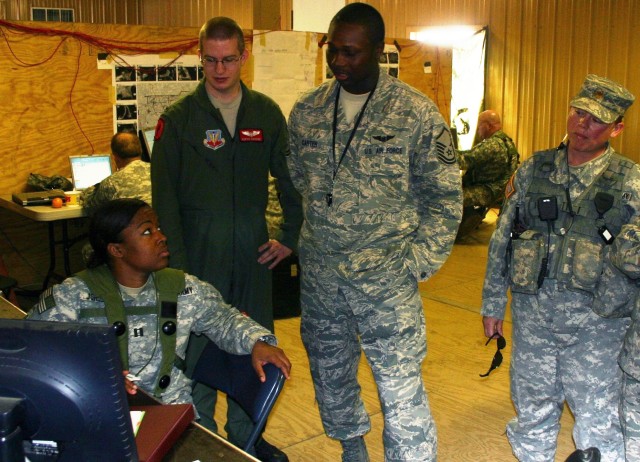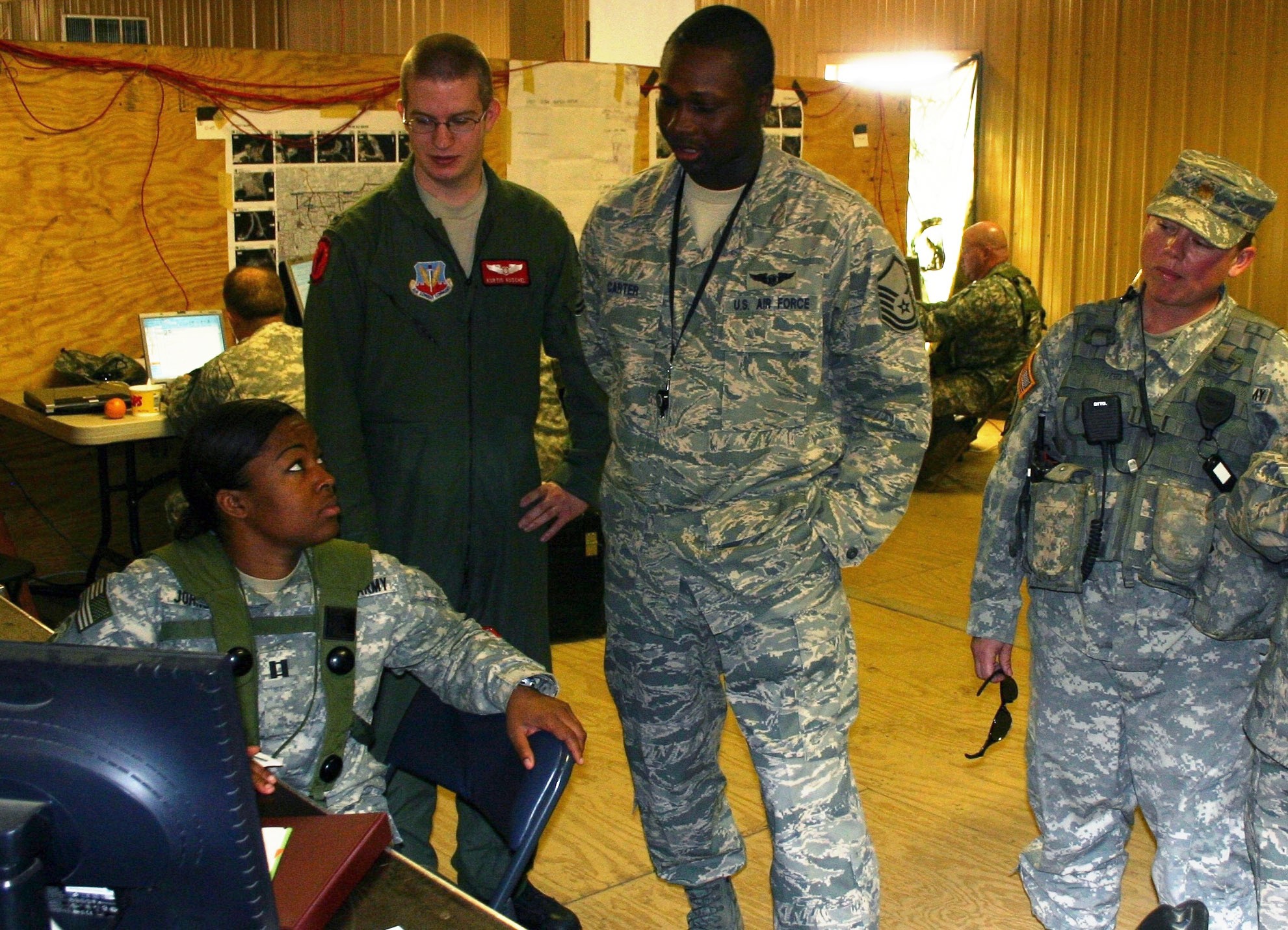
FORT POLK, La. (Army News Service, May 27, 2009) - The Joint Readiness Training Center and the Air Force's Green Flag East integrated a large number of intelligence, surveillance, and reconnaissance assets for a training rotation here last week to help hone the warfighting skills of the 1st Brigade Combat Team 82nd Airborne Division during the unit's mission rehearsal exercise as it prepares for a deployment later this year.
This integrated training between Air Force ISR platforms and the 1st BCT is essential to the success of the entire warfighting team, according to ISR leaders participating in the exercise.
"Our mission is to ensure that the BCT's military intelligence company is well integrated with the brigade's S2 (intelligence section) and collection manager, ensuring the synchronization of joint collection assets to assist the BCT's targeting cycle and process," said Maj. Typhanie Montemayor, senior training mentor, military intelligence company, JRTC. "Many people don't fully understand what joint assets can bring to the fight - they really don't receive that level of knowledge until they come here to train."
U.S. Joint Forces Command's Joint Fires Integration and Interoperability Team assisted the operations group at JRTC and GFE to enhance the joint intelligence, surveillance, and reconnaissance training of the BCT. ISR assets included the E-8 Joint Surveillance Target Attack Radar System, the RC-135 Rivet Joint, E-3 Airborne Warning and Control System, A-10 Thunderbolt close air support aircraft in a non-traditional ISR role and a Cessna aircraft outfitted with the equipment to replicate a MQ-1 Predator unmanned aerial system.
"This training rotation enabled 1st BCT to leverage an unprecedented number of live ISR platforms that will help prepare them for the challenges that lie ahead," said Air Force Lt. Col. Rhude Cherry III, commander, GFE and 548th Combat Training Squadron, Ft. Polk, La. "The ISR team assembled here facilitated the BCT's ability to practice with the assets they will have in theater that will help the ground commander deliver both lethal and non-lethal effects on the battlefield."
"It's all about helping the BCT learn how to integrate the capabilities of joint ISR assets before they deploy," added Air Force Tech. Sgt. Jenny McGlown, 1st BCT ISR liaison non-commissioned officer, 70th Mission Support Group, Fort Meade, Md. "It's very much a two-way street. My mission is to help educate the BCT about the ISR capabilities that are available and how to best use those platforms that they will see when they are deployed, and at the same time, learn how the brigade plans and synchronizes their ground operations by using the actionable intelligence information that we help provide."
The JSTARS aircraft is one of several unique ISR assets supporting this rotation that the 1st BCT will experience while in theater.
"JSTARS is a perfect example of what can be accomplished when we work together as a joint team," said Sgt. 1st Class Clint Bridenstine, airborne target surveillance supervisor, 138th Military Intelligence Detachment, Robins Air Force Base, Ga. "During live missions, I fly in the back of a JSTARS aircraft to help provide near-real time intelligence information and enhance the BCT's situational awareness by way of the common ground station.
"My goal is to show the BCT what JSTARS can provide so they can take advantage of its capabilities as soon as they arrive in country. Without question, the CGS and its crew at the BCT is the critical link that can greatly enhance the maneuver forces' situational awareness on the battlefield by receiving and using what JSTARS can provide."
JRTC and GFE use a variety of joint assets to provide a realistic, rigorous and stressful training environment that replicates the irregular warfare conditions found in Iraq and Afghanistan, because trainers can't assume units will know what to expect from the variety of ISR assets in theater, added Montemayor, saying that they want the Soldiers to be as successful as possible.
(Casey E. Bain works for the Joint Fires Integration and Interoperability Team, Joint Forces Command in Eglin Air Force Base, Fla.)

Social Sharing